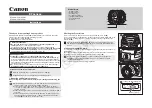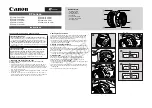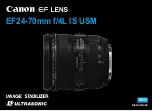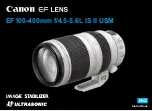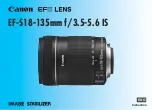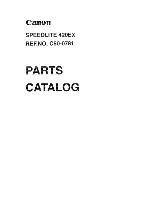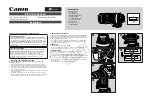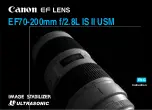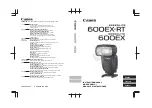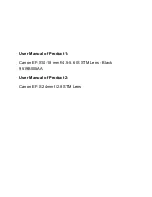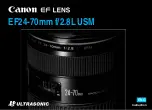
OPERATION OF THE METERING
SYSTEM
From the lop of the camera, Fig. 34,
you can see only one of the three IC's —
IC1. The other tw o IC's mount to the flex
circuit at the side of the mirror cage. IC2,
as m entioned earlier,
controls the
viewfinder LEDs. A hybrid IC — H-IC —
contains the transistor switching system
that links together the various camera
functions.
But IC1 does just about everything else
in the camera. For one thing, it contains
the op amp for the single silicon photo
diode (SPD), Fig. 35. Pushing the release
button part way closes the metering
switch to supply power to the circuit; you
should then measure +3 V at pin 1 of IC1,
Fig. 34. Also, the circuit forward biases
the silicon photodiode.
Figure 35
Figure 36
Current through the SPD determines
the gate bias of an FET (field-effect tran
sistor), Fig. 36. You can't as yet see the
FET in the camera; it mounts to the
underside of the flex circuit. The FET then
changes the linear current changes
through the SPD to linear voltage
changes at the amplifier input.
The voltage at the output of the op
amp. Fig. 36, now goes more positive as
the light intensity increases. This voltage
output feeds two circuits — the memory
system through IC1 and the LED display
through IC2. Besides seeing the output of
the op amp, IC2 receives an input from
the diaphragm resistor, Fig. 36. Conse
quently, all three exposure variables —
the light level, the film speed, and the
f/s to p — contribute to the LED readout.
A t the " S " mode, the minimum-aperture
information also goes to IC2.
IC1 uses the op amp output to charge
the memory capacitor, Fig. 35. As the
output of the op amp goes more positive,
the voltage measured across the memory
capacitor increases. So, if you connect a
voltmeter across the memory capacitor,
you should get a higher reading as you in
crease the light level or set a faster film
speed. Just push the release button part
way to charge the memory capacitor.
The charge across the memory capa
citor can continue changing as long as
the memory switch. Fig. 36, remains clos
ed. Fig. 33 points out the memory switch
in the camera. Just before the mirror
starts to rise, the insulated lever shown in
Fig. 33 drives open the memory switch.
Opening the memory switch locks in the
memory-capacitor charge.
However, you'll notice in Fig. 36 that
the memory-capacitor charge doesn't
change w ith different diaphragm open
ings. The diaphragm resistor affects only
the meter readout; it has nothing to say
about the actual exposure time. Yet the
exposure-control circuit must know the
diaphragm setting in order to program the
proper shutter speed.
Unlike most systems, the XD-11 selects
the automatic shutter speed by reading
the light through a stopped-down aper
ture. W ith the diaphragm fully open, the
SPD sees the maximum amount of light.
The indication circuit for the LED readout
must know the selected diaphragm open
ing in order to display the proper shutter
speed at the " A " mode.
Then, when you push the release but
ton the rest of the way, the diaphragm
starts closing. As a result, the SPD sees
less and less light. Now the voltage out
put of the op amp decreases (goes less
positive) in proportion to the actual
diaphragm opening.
The voltage across the memory
capacitor also decreases as the dia
phragm stops down. Once the diaphragm
reaches the proper aperture size, the
memory switch opens. Consequently, the
charge remains locked in the memory
c a p a c ito r. T h e m e m o ry -c a p a c ito r
voltage, modified by the decreasing ou t
put of the op amp, reflects all of the ex
posure variables — the light level, the
film-speed setting, and the diaphragm
opening.
A fter the memory switch opens, the
mirror starts moving to the taking posi
tion. The output of the op amp then
drops even more. But the actual metering
voltage no longer matters — the memory
capacitor has already memorized the
reference voltage.
The unique metering action can help in
troubleshooting. Since the indication cir-
SPEED
C O M P A R A T O R S
FOR LEDS
—
V ^ A A
D IA P H R A G M
RESISTOR
A A N D S
M O D E S
(0
uj
O
t o »
ir
uj
= UiW
z
a
uj
to tone
M E M O R Y
SW IT C H
M E M O R Y
C A P A C IT O R































